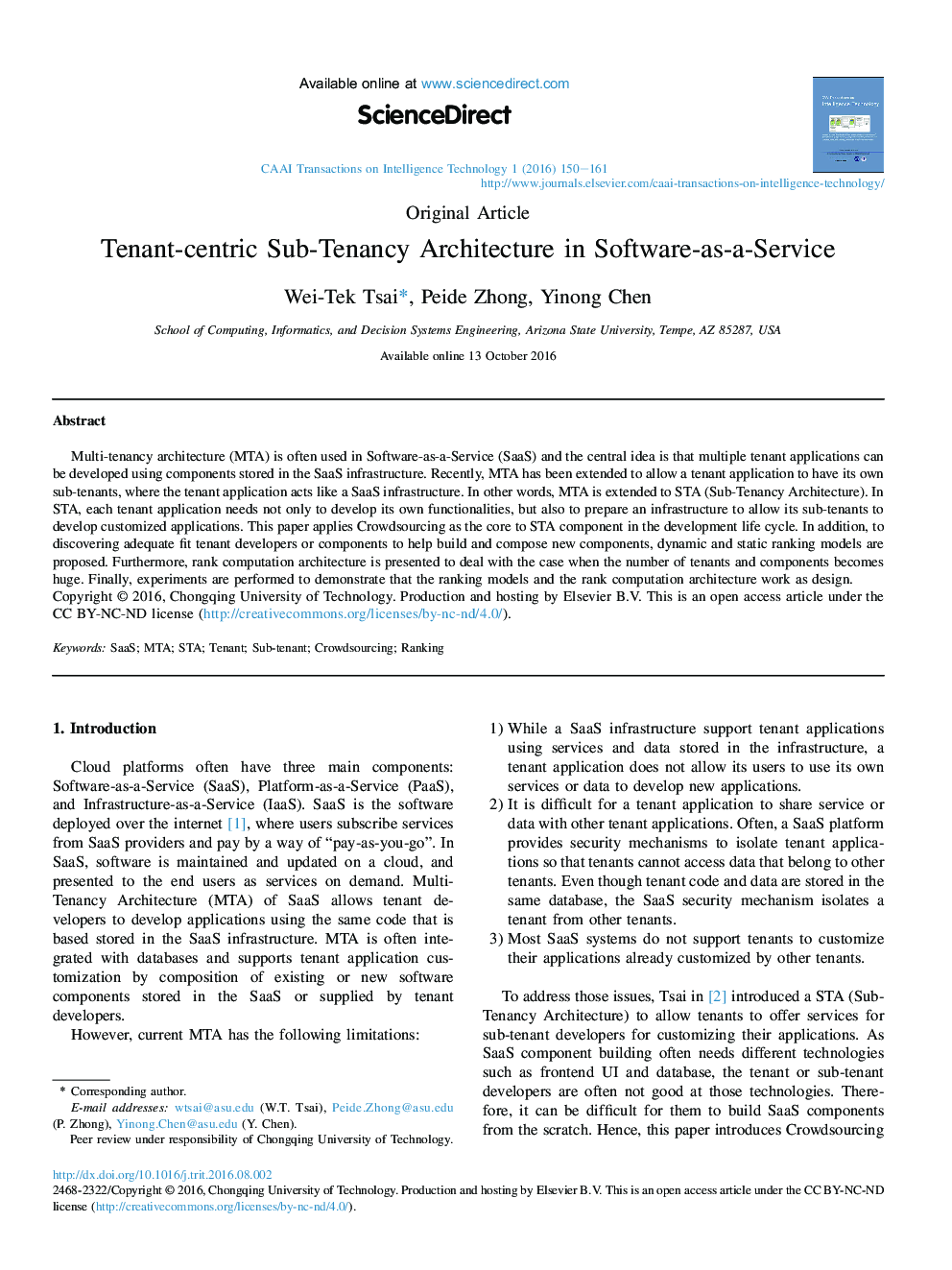| Article ID | Journal | Published Year | Pages | File Type |
|---|---|---|---|---|
| 6853628 | CAAI Transactions on Intelligence Technology | 2016 | 12 Pages |
Abstract
Multi-tenancy architecture (MTA) is often used in Software-as-a-Service (SaaS) and the central idea is that multiple tenant applications can be developed using components stored in the SaaS infrastructure. Recently, MTA has been extended to allow a tenant application to have its own sub-tenants, where the tenant application acts like a SaaS infrastructure. In other words, MTA is extended to STA (Sub-Tenancy Architecture). In STA, each tenant application needs not only to develop its own functionalities, but also to prepare an infrastructure to allow its sub-tenants to develop customized applications. This paper applies Crowdsourcing as the core to STA component in the development life cycle. In addition, to discovering adequate fit tenant developers or components to help build and compose new components, dynamic and static ranking models are proposed. Furthermore, rank computation architecture is presented to deal with the case when the number of tenants and components becomes huge. Finally, experiments are performed to demonstrate that the ranking models and the rank computation architecture work as design.
Keywords
Related Topics
Physical Sciences and Engineering
Computer Science
Artificial Intelligence
Authors
Wei-Tek Tsai, Peide Zhong, Yinong Chen,
